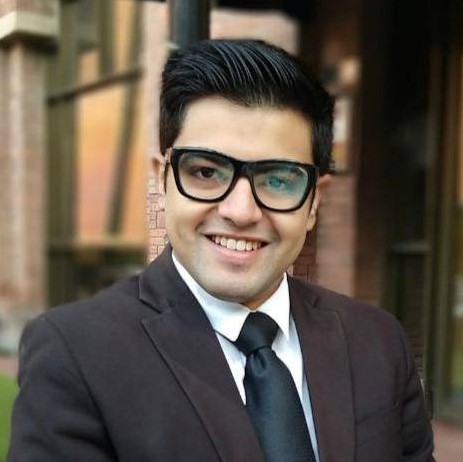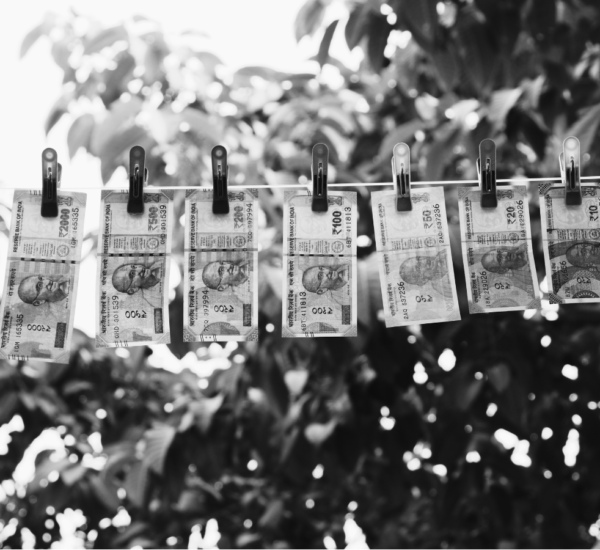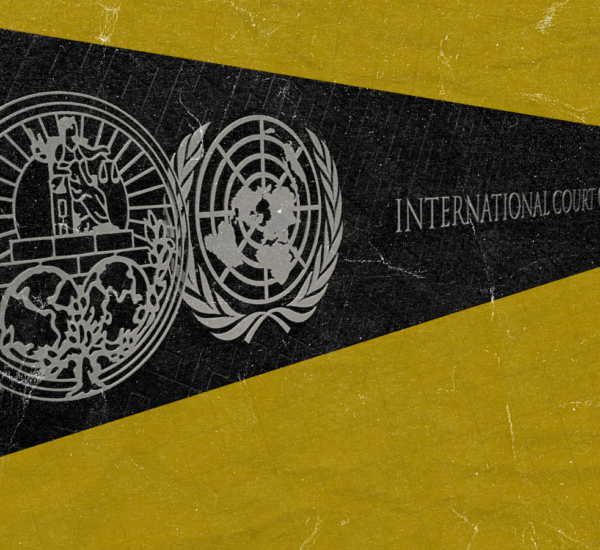
Siddhant Kohli
The much-discussed judgment of the Supreme Court in Vijay Madanlal Choudhary v. Union of India, upholding the Prevention of Money Laundering Act, 2002 [“PMLA”], decided a large number of crucial issues relating to personal liberty, and the relationship between a citizen under investigation and public servants with powers of search, seizure and arrest.
There is a background in which these issues arose. Money laundering and corruption have long affected the very fabric of Indian polity. The PMLA, as enacted in 2002, and amended multiple times thereafter, was an attempt by the legislature to curb corruption and to stem the flow of ‘dirty money’, and it was to this end that the stricter procedure and stringent bail conditions were enacted. Any decision by the Court had to be alive to this larger contextual backdrop.
One of the issues raised before the Court by the Petitioners was that the officers of the Enforcement Directorate [“ED”] were “police officers”, and thus bound by the rigours of Section 25 of the Evidence Act (inadmissibility of confessions before a police officer in evidence), as well as Chapter XII of the Code of Criminal Procedure [“CrPC”]. It was the submission of the Petitioners before the Court that ED officers, having been tasked with the prevention and detection of crimes, and in whom coercive powers were vested, were police officers. In their submission, what followed as a necessary sequitur was that they would not be competent to record confessions as per Section 25, and would have to comply with Chapter XII of the CrPC in the course of conducting investigations.
Previous Tests stipulated by the Supreme Court
While there had been no prior adjudication on the issue of whether officers of the ED were police officers, three judges of the Supreme Court had occasion, in the case of State of Punjab v. Barkat Ram, to answer whether a Customs Officer under the Land Customs Act and Sea Customs Act were police officers within the meaning of Section 25 of the Evidence Act. By a majority of 2:1, the Court concluded that the powers which “police officers enjoy are powers for the effective prevention and detection of crime in order to maintain law and order”, while “The powers of Customs Officers are really not for such purpose. Their powers are for the purpose of checking the smuggling of goods and the due realisation of customs duties”. Thus, the first test that the Court applied in that case was whether an officer is vested with the “powers for the effective prevention and detection of crime in order to maintain law and order”. The Court further held that the nomenclature of a “police officer” is not determinative, and that the words “police officer” were not to be construed in a narrow way, but “in a wide and popular sense”. The majority went ahead to apply this test and held that as Customs Officers were concerned with the detection of smuggling of goods, and not the detection of a crime, they were not police officers.
The incongruity of this conclusion was recognized by Justice Subba Rao, who dissented. Quite apart from the fact that detecting the smuggling of goods was itself the detection of a crime, since smuggling had been criminalised, Justice Rao recognized the inherent contradiction in the view of the majority. In the first paragraph of his dissent, he pithily stated that that one cannot agree that “while a confession made by an accused to a police officer is not admissible in evidence in a court of law, the same if made, under exactly similar circumstances, to a Customs Officer can be relied and acted upon”.
In arriving at this conclusion, Justice Rao traced the raison d’être of Section 25, which was enacted to prevent the malpractice of police officers in extorting confessions from accused persons. He also traced a number of High Court judgments, which had held that as long as the powers conferred and duties imposed on an officer were akin to those of a police officer, the bar under Section 25 would apply. In his reasoning, Justice Rao affirmed a division bench of the Madras High Court, in Public Prosecutor v. Paramasivam, which considered the status of an excise officer under the Opium Act. The High Court put it inimitable:
The material thing to consider would be not the name given to him, nor the colour of the uniform he is required to wear, but his functions, powers and duties. A police officer does not cease to be such merely because he is put into a white khadder uniform instead of one in khaki drill; a medicine will be just the same whether it is packaged in a glass jar or a plastic container.
Applying this test, Justice Rao found that officers of customs had powers of search, seizure, and arrest. The Customs Act created certain offences, and the officers of customs had the duty to prevent and detect such crimes from taking place. Applying the “broad and not narrow” test laid down by the majority itself, Justice Rao came to the opposite conclusion and held that officers of customs were police officers, and thus covered by Section 25 of the Evidence Act.
The same test was then applied by another three-judge bench of the Court, merely two years later, in Raja Ram Jaiswal v. State of Bihar, a case relating to Excise Officers under the Bihar and Orissa Excise Act, 1915 (by a majority of 2:1). After noting Barkat Ram, and distinguishing it on the basis of the provisions involved in that statute, the Court formulated a fresh test, which was whether the powers of the officer in question “establish a direct or substantial relationship with the prohibition enacted by Section 25, that is, the recording of a confession. In other words, the test would be whether the powers are such as would to facilitate the obtaining by him of a confession from a suspect or delinquent.”
It is clear, then, that the Bench in Raja Ram Jaiswal found the test laid down in Barkat Ram to be insufficient. According to this different bench of co-equal strength, the determinative factor was not why powers had been conferred on such officers, but whether the powers so given would facilitate the giving of a confession prohibited under Section 25.
Both these cases were then brought to the attention of the Court in Badaku Joti Savant v. State of Mysore, a bench of 5 judges, while dealing with the Central Excises and Salt Act. Instead of settling the determinative test to be applied by dealing with the reasoning in both the judgments, the Court instead found that as the scheme of the Act under consideration was closer to the Act under consideration in Barkat Ram, and not Raja Ram Jaiswal, the ratio of Barkat Ram would be followed. The Court, further, laid down another test, which was that “even if an officer under the special Act has been invested with most of the powers which an officer in charge of a police station exercises when investigating a cognizable offence he does not thereby became a police officer within the meaning of Section 25 of the Evidence Act unless he is empowered to file a charge-sheet under Section 173 of the Code of Criminal Procedure.” It is worth highlighting that as this test was laid down by a bench of five judges, this would be the test that would hold the field.
In 1969, two benches of five judges in Illias v. Collector of Customs and Ramesh Chandra Mehta v. State of W.B. also followed Badaku Joti Savant to hold that as the officers of Customs did not have the power to file a charge sheet under Section 173 of the Code of Criminal Procedure, they were not “police officers”.
In 1980, an issue was raised before the Court with respect to whether officers of the Railway Protection Force [“RPF”] were “Police Officers”. In Balkishan A. Devidayal v. State of Maharashtra, it was argued before the two judge Bench that what must actually be considered to determine the question was whether the powers conferred on RPF officers would tempt them to obtain a confession illegally, and not whether they could file charge sheets. While the Court prima facie seemed to agree with the reasoning so advanced, it found itself bound by the Constitution Benches referred to above, and followed the Section 173 CrPC test.
One must then come to a rather recent judgment of the Supreme Court, in Tofan Singh v. State of T.N., which considers all the decisions set out above in the context of the NDPS Act. The majority in that case traces the inconsistencies between Barkat Ram and Raja Ram Jaiswal, and specifically finds that in all subsequent cases which have noted either of the two cases, including subsequent Constitution Benches, the Court has taken care to distinguish one of the two judgments on facts. The Court found that both judgments are distinguishable, but continue to operate in their respective fields.
The incongruities in Vijay Madanlal Choudhary
The judgment in Vijay Madanlal Choudhary,however, does not distinguish the judgments, or discuss their reasoning. In the first breath, in paragraph 438 (of the SCC version), the Court extracts and follows Barkat Ram. In paragraph 441, the Court then extracts Raja Ram Jaiswal, calling it a judgment “on similar lines”. The Court then extracts from Badaku Joti and Ramesh Chandra Mehta in paragraphs 442 and 443. Immediately thereafter, the Court goes on to distinguish the ratio of Tofan Singh, without dealing with the judgments quoted or the test to be applied. The Court finds the PMLA to be on a different pedestal as a “sui generis legislation”, and finally, in paragraph 449, the Court concludes the issue by merely stating:
449. …there is stark distinction between the scheme of the NDPS Act dealt with by this Court in Tofan Singh and that in the provisions of the 2002 Act under consideration. Thus, it must follow that the authorities under the 2002 Act are not Police Officers.
The Court has not found ED officers to be police officers because they do not satisfy the test laid down in Barkat Ram, or Raja Ram Jaiswal, or Badaku Joti. The Court does not find the various tests to be applying varying standards, and does not state that only the test laid down by the larger bench would apply and has been applied.
With utmost respect, the issue before the Court was not whether ED officers were police officers because the scheme of the PMLA was akin to the NDPS Act, but whether ED officers had been vested with the powers of the police which would tempt or enable them to obtain confessions by threat or coercion. This issue has not been answered by the Court.
There are two compelling reasons which the Court ought to have considered while reaching a conclusion. Firstly, the question of whether an officer is a “police officer” for the purpose of Section 25 of the Evidence Act has to be seen from the lens of Section 25 itself. Section 25 is a salutary protection in order to prevent the practice of torture by the police for the purpose of extracting confessions from persons in their custody (Stephen, Introduction to Indian Evidence Act, p.171). Assuming another officer is given certain powers, which would allow them to use torture for extracting a confession, regardless of which part of the security apparatus of the state this officer comes from, the very same considerations of Section 25 would apply on all fours. By means of Section 25, the legislature as a blanket rule distrusts confessions made to an authority which could even potentially torture. The evil that the legislature had sought to remedy by means of Section 25, in view of the malpractices of police officers in extorting confessions from accused persons to secure convictions, would equally be an evil that had to be remedied with respect to all other officers. The nomenclature of “police officer” is meaningless to this determination.
Another standard that could perhaps have been applied is how an accused citizen would identify a government servant, by whatever name called, who has the power to knock on the accused’s door, search his property, seize it for the purpose of enquiry or investigation, ask questions regarding the commission of a crime, and threaten imprisonment if those questions were not answered satisfactorily. The answer, a priori, is that, from the eyes of an accused, such a government servant would be the police. The same considerations that would go through the mind of an accused being questioned by the police, would also go through the mind of an accused being questioned by any other officer of the security apparatus of the State. Failure to accord the same procedural protections to the accused in both cases is manifestly unjust.
Secondly, under Section 45(1A), PMLA, a “police officer” could be specifically authorised by the Central Government to investigate offences under the Act. In such a case, an accused being investigated by a police officer would be given the protection of Section 25, while an accused being investigated for the very same offence by an officer of the ED, would not. This would be a clear violation of Article 14 of the Constitution.
There are a slew of other protections that would also apply in the case of an investigation by a police officer. For instance, under the proviso to Section 160 in Chapter XII of the CrPC, a police officer cannot compel the attendance of a witness who is under fifteen, or over sixty-five, or a woman, or a physically disabled person, other than at the residence of such a witness. Again, from the view point of such a witness, who is treated as a separate protected category when the investigation is conducted by a “police officer”, it should make no difference whether the crime is being investigated by a “police officer” or some other officer of the security apparatus of the State. These discriminations are writ large and require a broader rethink.
Conclusion
It may be noted that the Supreme Court, on 25.08.2022, has issued notice in a review petition filed against the judgment in Vijay Madanlal Choudhary. The review petition under consideration, inter alia, raises this issue as well for the consideration of the Court, and gives the Court an opportunity to refer the matter to a larger bench, reconcile the various tests laid down in the past, and provide a principled framework to finally settle the issue once and for all.
Siddhant Kohli is a lawyer practicing in the Supreme Court of India.





